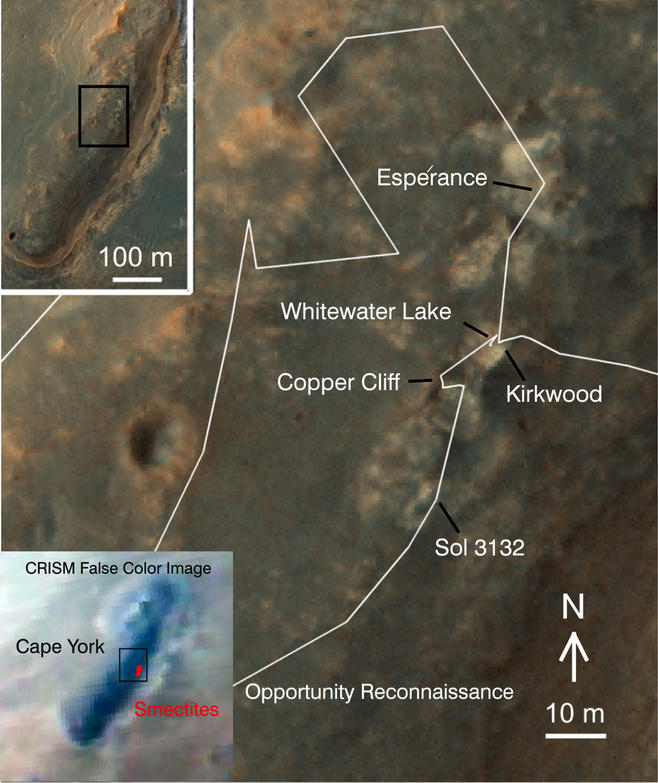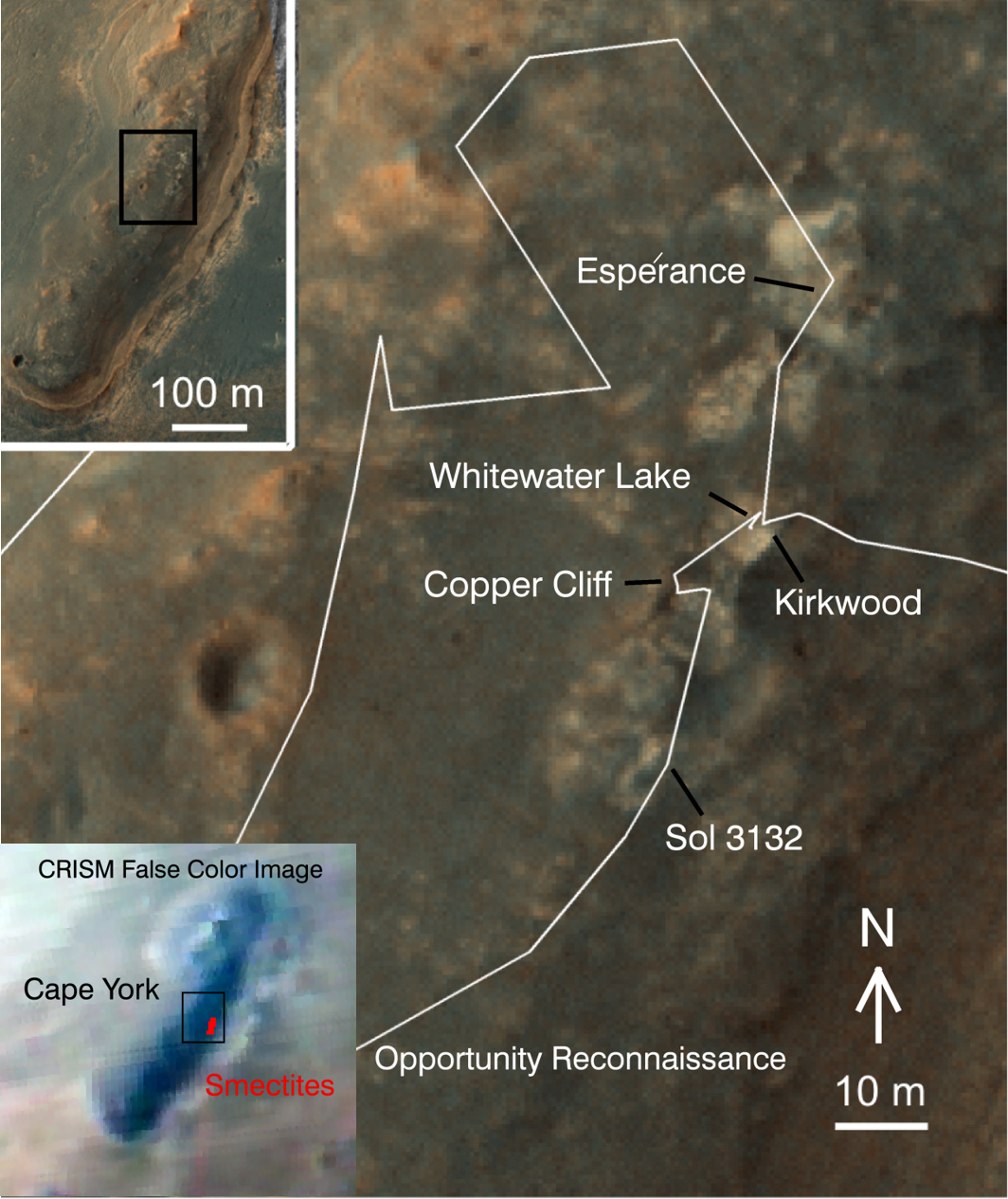Cape York’ Explored

| Credit | NASA/JPL-Caltech/Univ. of Arizona |
|---|---|
| Language |
|
A region known as "Cape York" on the western rim of Endeavour Crater, where NASA's Mars Exploration Rover Opportunity worked for 20 months, is highlighted in these images.
The inset at upper left is a portion of a false-color image taken by the High Resolution Imaging Science Experiment (HiRISE) camera on NASA's Mars Reconnaissance Orbiter. The black outline shows the "Matijevic Hill" region, enlarged in the central image. Initial traverses accomplished by Opportunity to evaluate the geologic setting of the region are noted. The Opportunity team was interested in this region because the Compact Reconnaissance Spectrometer for Mars (CRISM) on NASA's Mars Reconnaissance Orbiter showed a specific type of clay mineral called a ferric smectite. This type of clay mineral originally formed in groundwater along fractures in which the water was only mildly acidic.
The lower left inset shows a portion of CRISM data centered on Cape York. The red region delineates where CRISM spectra show features diagnostic of the smectite clay mineral.
This image is from a portion of a HiRISE observation catalogued as ESP_032573_1775 . Other products from the same observation are available
at http://hirise.lpl.arizona.edu/ESP_032573_1775 .
HiRISE is operated by the University of Arizona, Tucson. The instrument was built by Ball Aerospace & Technologies Corp., Boulder, Colo. CRISM was built and is operated by the Applied Physics Laboratory of Johns Hopkins University, Md. NASA's Mars Exploration Rover Project, Mars Reconnaissance Orbiter Project and Mars Science Laboratory Project are managed for NASA's Science Mission Directorate, Washington, by NASA's Jet Propulsion Laboratory, a division of the California Institute of Technology in Pasadena.

